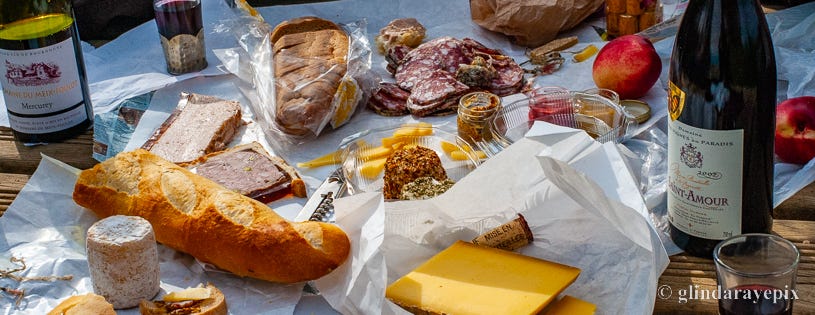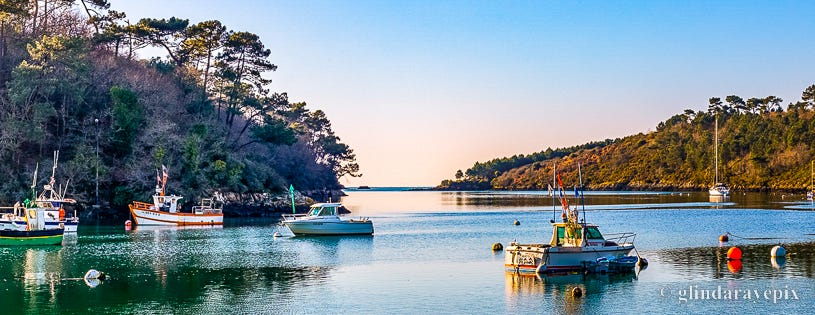We were talking about where to go with this week's daily feed of Travel Odds & Ends, when for no reason our thoughts turned to the Christian miracle known as the Feeding of the Five Thousand. Whatever your relationship to Christianity, the miracles at its heart are uniformly well meant and kind-hearted, if occasionally a bit showy (walk on water anyone?). But to us, the 5,000 story always stood out for its scope and generosity.
For the uninitiated, Jesus saw the crowd by the Sea of Galilee starting to get hungry, so he asked what food was available. A boy brought him five loaves and two fishes—Tilapia, the theory goes. Jesus said grace over them, and when he handed out the vittles, there was enough to feed all 100 groups of 50, with 18 baskets left over. The Apostles might have left the details a bit sketchy, but the only reasonable, unbiased response we can think of is:
How cool was that?
So we started thinking about fish and bread—two staples in our house—and all of the wonderful serendipities in life that have arrived with them. And since we were driving home from the Oncologist's office—where this conversation about miracles naturally started—we decided to rummage through the travel bin for stories and photos that would fit, however tentatively, into the themes of bread, fish, love, and gratitude. So here they are.
And now, our weekly round-up of daily bits and pieces from our much-too-cluttered travel bin. Click on any title for a deeper dive.
1. La Baguette Parisienne
When it comes to baking, nothing produces an edible product quite like dogged determination. In the final sixty days of this gothic tale, we knew we'd arrived, when the neighborhood added the suffix BYOBaguette to every invitation sent our way.
2. Lobster Fishing in Maine
Lobster is one of the few seafoods where there’s a clear difference in taste and quality between one region of the world and all others. And that special region is the Maine coast. The lobsters there are the finest on the planet, and there's just no discussing it. Or so says we.
3. Baltic Herring
Even though the Baltic fisheries have been depleted, we expected eating habits this ancient and venerated to die slowly. But the issue was that we'd been eating at the trendy, modern restaurants that abound in Scandinavia. And there isn't a hint of trendy about the modest, reliable, indefegatiblely schooling and reproducing Herring.
4. Bella Martha
The language the movie uses to express its wealth of humanity is entirely the language of food. Martha is a superb French chef who can't seem to carry a conversation about anything else. Her professional kitchen is as creative as any, yet like her life, it's strangely incomplete—her yin missing its yang. And everyone but Martha sees it.
5. Tuscan Minestra di Pane Rustica
The Italian language is perfect for argument and remonstration, and in the right setting, can make for great theater. An evening with this ancient Resistenti couple was more an entertainment than a meal, but the meal itself was unfailingly fabulous.
6. Huîtres de Bélon
The beds and farms along the Bélon River in Bretagne long ago received the only AOC (Appellation d'origine contrôlée) in the oyster world. For those who know their Champagnes, Bordeaux, Cognacs, and Roqueforts, this means that the Bélon oyster is so unique and special—with a crisp texture, a mildly briny, coppery taste, and a tannic accent—that the French government legally protects its name.
7. The Return of the Dinner Party
The only true measure of success in cooking is how much of the food gets eaten. And on that score, we gave ourselves a B+. Not bad after two COVID-induced years off. The only measure of success in a dinner party is the mix of friends and conversation, and on that we nearly always give ourselves an A.
And lest we forget, there’s this week’s Travel Newsletter:
Pork Pies and Pickled Onions
Wherein the British Reputation for Inedible Food Takes a Minor Hit














